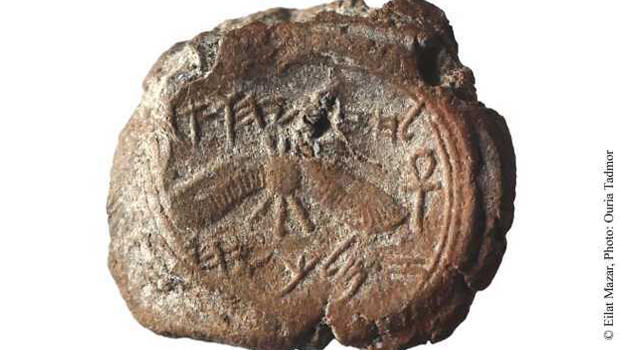 For millions of Western Christians, this Wednesday, January 6, will be the Feast of the Epiphany–a day associated particularly with the light of the star that guided the Magi to the Christ Child (see Matthew 2:1-12). More broadly, however, Epiphany celebrates the light of God shining into the world with the birth of Christ, and indeed, the light of God’s revelation shining into our lives yesterday, today–and one day, forever!
For millions of Western Christians, this Wednesday, January 6, will be the Feast of the Epiphany–a day associated particularly with the light of the star that guided the Magi to the Christ Child (see Matthew 2:1-12). More broadly, however, Epiphany celebrates the light of God shining into the world with the birth of Christ, and indeed, the light of God’s revelation shining into our lives yesterday, today–and one day, forever!
In Malachi 4:1-3 (3:19-21 in the Hebrew), that coming day of the LORD is described, as is typical in the Book of the Twelve (for example, see Zech 10:3-6; 12:1-9), as a day of fiery judgment upon the wicked oppressors of God’s people:
Look, the day is coming,
burning like an oven.
All the arrogant ones and all those doing evil will become straw.
The coming day will burn them,
says the LORD of heavenly forces,
leaving them neither root nor branch. . . .
You will crush the wicked;
they will be like dust beneath the soles of your feet
on the day that I am preparing, says the LORD of heavenly forces.
But Malachi also declares that that day will be a time of renewal and blessing for God’s faithful, who are rejuvenated and filled with exuberant joy:
But the sun of righteousness will rise on those revering my name;
healing will be in its wings
so that you will go forth and jump about like calves in the stall (Mal 4:2).

Christian readers of this blog will likely be reminded of Charles Wesley’s use of this passage in his 1739 Christmas carol “Hark! the Herald Angels Sing.” Charles Wesley’s third stanza is:
Hail the Heav’nly Prince of Peace!
Hail the Sun of Righteousness!
Light and Life to All he brings,
Ris’n with Healing in his Wings.
Mild he lays his Glory by,
Born—that Man no more may die,
Born—to raise the Sons of Earth,
Born—to give them Second Birth.
In Wesley’s mind, clearly, the “Sun of Righteousness” is Jesus!
 For Malachi, it is the LORD who is “the sun of righteousness,” rising with “healing. . . in its wings.” The Greek translation of Jewish Scripture, the Septuagint, as well as the Latin Vulgate, have “his wings” (see the KJV, and the words of Wesley’s carol), but the Hebrew text and the Targum (the Aramaic version of this text used in early synagogues) have “her wings”–probably with reference to “righteousness,” which is a feminine noun in Hebrew.
For Malachi, it is the LORD who is “the sun of righteousness,” rising with “healing. . . in its wings.” The Greek translation of Jewish Scripture, the Septuagint, as well as the Latin Vulgate, have “his wings” (see the KJV, and the words of Wesley’s carol), but the Hebrew text and the Targum (the Aramaic version of this text used in early synagogues) have “her wings”–probably with reference to “righteousness,” which is a feminine noun in Hebrew.

For good (for example, Ps 84:11) or for ill (see Ezek 8:16), images of the LORD as the sun, and associations of the sunrise with God’s presence in the Jerusalem temple (which faced east) are fairly common in Scripture. As a part of the worship reforms put in place by King Josiah, the horses and chariots of the sun were removed from the temple (2 Kgs 23:11). Indeed, mosaics of the solar chariot (associated in Greco-Roman religion with Apollo or with Sol Invictus) appear in early synagogues at Beth Alpha (shown above), Naaran, Hamath Tiberius, Yafa, and Isfiya.

The Egyptian sun disc, often combined with a winged scarab, was a widespread symbol in the ancient Middle East, even incorporated into the royal seals of Judean kings such as Hezekiah.

Malachi, writing in the Persian Period, was likely familiar with a modification of the winged solar disc from Persian art. This symbol appears with Persian king Darius’ monumental inscription at Behistun, at his palace at Persepolis, and above the door of his tomb (depicted above); likely, it is meant to represent the Persian creator god Ahuramazda. But for the prophet Malachi, of course, the sun of righteousness with healing in his wings can only be the LORD! Depicting God’s coming as the sunrise represents a positive counter to the destructive image of the day of the LORD “burning like an oven” (4:1): the coming of the LORD may burn, but it also heals.
May this new year be for us all a time of healing and renewal. May the Sun of Righteousness rise today, in our hearts, our homes, our country, and our world, burning away the chaff and dross of the past, and empowering us to live anew!
If the main argument against the Sun of Righteousness being Jesus is that it’s Feminine in the Hebrew, sorry but independent of this verse I already view Jesus as Bi-Gender, both male and Female. After all Paul says Jesus is the Image of God and Genesis 1 and 5 tell us the Image of God is both Male and Female. The Desire of Nations of Haggai is also Feminine in the Hebrew, as is most Hebrew Bible uses of the Noun that the name Yeshua comes from, commonly translated Salvation.
Of course your final conclusion is that the Sun of Righteousness is “The LORD” YHWHW. However YHWH is Jesus, that’s why he says “Before Abraham was I Am” and why the Pesthia frequently refers to Him as Mar-Yah.